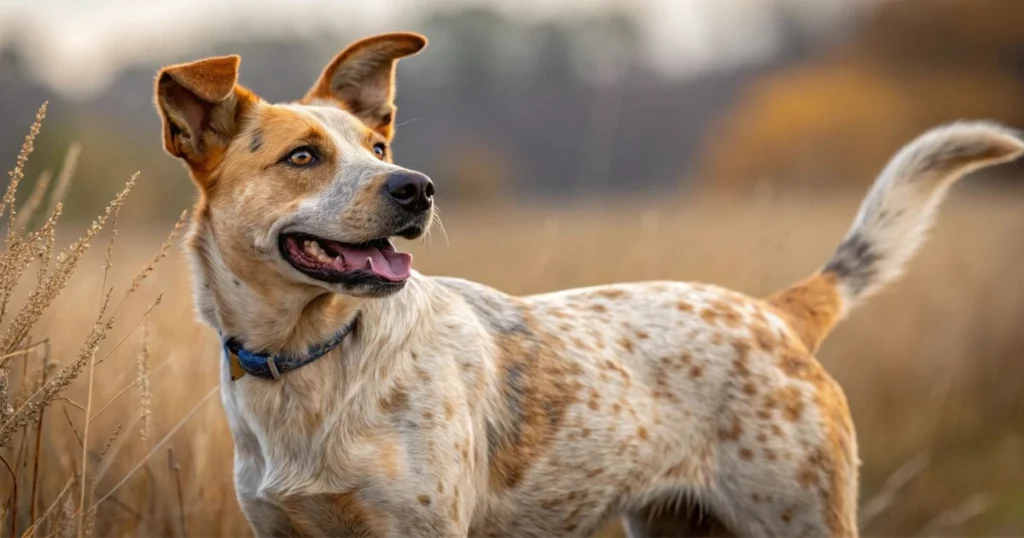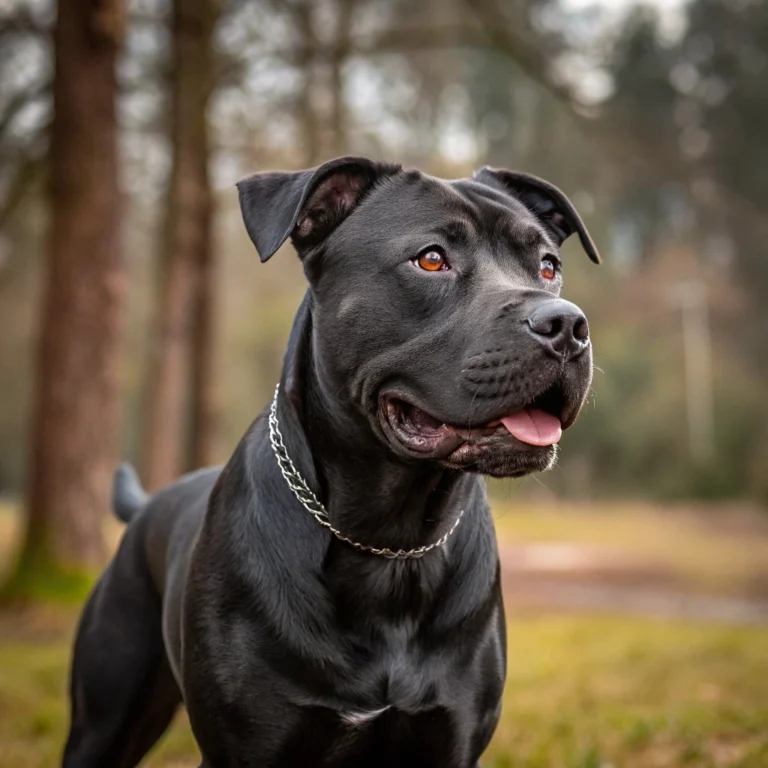Labrador Blue Heeler Mix: What New Owners Should Know
You’re here because you want to find out more about adding a Labrador Blue Heeler mix to your family. It’s an exciting choice. Imagine this: a Labrador’s lovable loyalty mixed with a Blue Heeler’s endless energy and intelligence. It’s a hybrid that does not just bring a dog into your home; it brings a partner, protector and fount of irrepressible joy. But that joy is not without responsibility. This is not a “set it and forget it” breed. So if you’re interested to discover what you need to do to care for this Bandog cross, then you are in the right place.
Table of Contents
Meet the Labrador Blue Heeler Mix: Breed Overview

Origins of the Labrador Blue Heeler Mix
The first step to bonding is knowing your dog’s backstory. A Labrador Blue Heeler mix, also sometimes referred to as a Labraheeler, is a cross between a Labrador Retriever — a gundog — and an Australian Cattle Dog — a herding dog.
This hybrid is not recognized as a purebred by major kennel clubs, but it has earned a strong following due to its dynamic temperament and sturdy build. You’re not just getting any dog—you’re getting a companion with a lineage steeped in purpose.
Physical Appearance and Coat
Anticipate a dog that is lean, muscular and designed for action. The height of this breed is between 18 and 24 inches and the weight between 35 and 65 pounds.
The coat varies in texture and color:
- Common colors: black, chocolate, blue-speckled, brindle, or merle
- Texture: dense and weather-resistant
- Shedding: moderate to high; expect seasonal blowouts
You’ll need a solid grooming routine to keep this coat under control—but more on that later.
Temperament and Personality Traits
Intelligence and Trainability
You’re looking with a very, very sharp dog. Labradors and Blue Heelers are both highly intelligent, both in obedience and working intelligence. So your mix is apt to learn commands fast, and may even predict your next move. They love a job to do.
But there’s a catch: high intelligence needs regular mental stimulation. Without it, your dog could become bored—and that’s when the furniture gets chewed.
Loyalty and Energy Levels
It’s not a breed for couch potatoes. The Labraheeler becomes strongly attached to its family and may become especially close to one person. That bond means they can be good watchdogs and faithful companions, but it also means they’re prone to anxiety or unwelcome antics when left alone too long.
You’re looking at a dog that needs:
- 1.5 to 2 hours of daily exercise
- Structured play and tasks
- Consistent companionship
Training and Socialization Tips for Success
Start Early with Consistent Commands
Education The training process should start as soon as you get your Labraheeler home. These dogs have such a remarkable response to clear commands, particularly when they are rewarded with treats, toys or affection.
To make the most of training:
- Use short, energetic sessions (10–15 minutes)
- Combine voice commands with hand signals
- Be consistent with language and tone
Socialization Is Crucial
This mix gets the herding instinct from the Blue Heeler. Without early exposure to a variety of sights, noises, animals, and people, some can become reactive.
Here’s how to socialize your pup:
- Introduce to new environments weekly
- Arrange playdates with other dogs
- Consider puppy classes or structured daycare
Proper socialization ensures your dog grows into a confident and balanced adult.
Nutritional Needs of a Labrador Blue Heeler Mix

Balanced Diet Requirements
This mix is always moving, which means it burns calories quickly. Feeding your Labraheeler a high-protein, high-fat diet supports its energetic lifestyle and lean muscle mass.
What to look for in dog food:
- Protein-first ingredients (like chicken or lamb)
- No fillers (avoid corn, soy, and meat by-products)
- Omega-3s for joint and brain health
Nutritional Table by Age
| Age | Protein % | Fat % | Meals Per Day | Notes |
|---|---|---|---|---|
| Puppy (2–12 mo) | 22–28% | 8–15% | 3–4 | Rapid growth support |
| Adult (1–7 yr) | 18–25% | 7–12% | 2 | Maintain energy + lean body |
| Senior (7+ yr) | 15–20% | 5–10% | 2 | Prevent obesity and joint issues |
Don’t forget fresh water! Your dog needs access 24/7, especially after activity.
Health Issues to Watch Out For
Common Health Concerns in This Mix
Like all breeds, the Labrador Blue Heeler mix has some predispositions. Being informed helps you stay proactive.
Common health risks:
- Hip and elbow dysplasia (from both parents)
- Progressive retinal atrophy (PRA) affecting vision
- Congenital deafness, especially in blue or merle-coated dogs
- Obesity, particularly if exercise is lacking
Prevention and Care
Here’s what you can do:
- Annual vet visits
- Routine dental cleanings
- Weight management with portion control
- Ask breeders for genetic testing results before adoption
Exercise and Mental Stimulation Needs
Physical Activity Guidelines
Your Labraheeler doesn’t just need walks—it needs full-throttle adventures. Regular strolls won’t cut it.
Try:
- Daily jogs or long hikes
- Agility or herding classes
- Off-leash play in secure spaces
Every day, try to get in at least 90 minutes of physical activity.
Mental Stimulation Strategies
Keep that sharp brain working with:
- Puzzle toys
- Training drills and new tricks
- Snuffle mats or treat balls
Rotate toys weekly to avoid boredom.
Grooming and Maintenance
Coat Care
Which parent the coat prefers will determine how much or how little your mix sheds. Brushing maintains the coat’s health and aids in management.
Routine grooming tips:
- Brush 2–3 times weekly
- Use undercoat rake during seasonal shedding
- Bathe monthly or as needed
Nail, Ear, and Dental Hygiene
Healthy grooming isn’t just about fur.
Stay on top of:
- Nails: trim every 3–4 weeks
- Ears: check and clean weekly to prevent infection
- Teeth: brush 2–3 times a week or use dental chews
Size, Growth, and Weight Expectations
Size Range
Most Labrador Blue Heeler mixes are medium to large in size.
- Height: 18 to 24 inches
- Weight: 35 to 65 pounds
Males tend to be on the larger side.
Growth and Weight Chart
| Age | Weight (lbs) | Height (inches) |
|---|---|---|
| 2 months | 8–12 | 8–10 |
| 4 months | 15–25 | 12–15 |
| 6 months | 25–40 | 14–18 |
| 1 year | 40–65 | 18–24 |
Keep a close eye on weight as they age. Overfeeding is common, especially with that Labrador appetite.
Living Conditions and Family Compatibility

Is This Mix Right for Your Home?
The Labraheeler is not your average apartment dog. While they can adapt to smaller spaces, they need access to outdoor areas and room to stretch.
Ideal environments:
- Homes with fenced yards
- Families with active lifestyles
- Owners with time to train and play
They’re not suited for long periods alone or sedentary living.
Compatibility with Children and Other Pets
You’ll find this mix is affectionate and playful—but early training matters.
- Good with kids if socialized early
- May nip at heels due to herding instincts
- Gets along with pets when raised together or properly introduced
Always supervise play with young children.
Adoption vs Buying: What to Consider
Finding a Responsible Breeder
Do your research before choosing to become a breeder:
- Visit the facility
- Ask for parent health records
- Watch how puppies interact (early behavior matters)
Avoid breeders who:
- Don’t allow visits
- Won’t show parents
- Have multiple litters on-site
Benefits of Adoption
Adopting isn’t just rewarding—it’s smart.
Perks include:
- Lower cost
- Dogs may be house-trained or obedience-trained
- Support shelters and reduce overpopulation
Check local rescues or online directories for available Labraheelers.
Questions and Answers Regarding the Labrador Blue Heeler Mix

How much exercise does a Labrador Blue Heeler mix need daily?
At least 90 minutes of active play, running, or hiking—plus mental challenges.
Are Labrador Blue Heeler mixes good with kids?
Yes, when socialized early. Their playful yet protective nature makes them a great family dog.
How big do Labrador Blue Heeler mixes get?
Expect a size range of 35 to 65 lbs, with a height of 18 to 24 inches.
Do they shed a lot?
They shed moderately to heavily, especially in spring and fall. Brushing helps manage it.
Are Labrador Blue Heeler mixes easy to train?
Very. Their intelligence makes them quick learners when training is consistent and positive.
Conclusion: The Perfect Partner for an Active Lifestyle
Bringing a Labrador Blue Heeler mix into your life isn’t just about owning a dog—it’s about building a relationship. This mix craves interaction, thrives on challenges, and rewards your effort with unwavering loyalty. If you’re someone who values companionship, adventure, and a touch of daily chaos, you’ll find no better match.
Just remember: this dog will mirror the energy, structure, and love you provide. So bring your best self to the relationship, and you’ll be rewarded with a bond that goes beyond wagging tails.







